
by Dr Manjir Samanta-Laughton | May 24, 2020 | Punk Science, Science
Bizarre though it seems, stars are shooting out water. We take a look at the link with The Black Hole Principle.
This is a topic that I think should be discussed more often; water is ejected from stars in space that are extremely hot. It sounds like science fiction but it is true.
Water has been detected coming from stars including our own sun.
Young star ejects water bullets
There is an example of a young star 750 light-years from Earth which is ejecting water jets from its poles at a speed of about 124,000 miles per hour. ESA’s Herschel Space Observatory, which spotted this, seems to have detected water in liquid form before it vapourised. Then it became liquid again once it had travelled far from the star.

Is it raining on the sun?
Closer to home we have also seen water vapour being emitted from sunspots as early as the 1990s. It isn’t just young and middle-aged stars that have been spotted ejecting water. We have also seen it coming from brown dwarves too.

So what is happening?
Predicted by The Black Hole Principle
These findings, which mainstream scientists don’t often discuss, makes total sense in The Black Hole Principle. According to the theory, we see water ejected in jets at every level of the universe. We do indeed have evidence for this. We have witnessed water coming from supermassive black holes in galaxies as well as in thunderstorms (as rain) and geysers here on Earth. It is the same pattern. That’s why both supermassive black holes and our weather systems eject antimatter and gamma rays.
So we would expect stars to be ejecting water. In fact, this is possibly the only scientific theory in the world which expected to see water from stars.
And why from poles and sunspots? Because in the Black Hole Principle the bipolar jet configuration of ejection is quite common. As for sunspots – the sun is in a fractal pattern of black holes. Sunspots are smaller black holes on the larger black hole central to the sun.
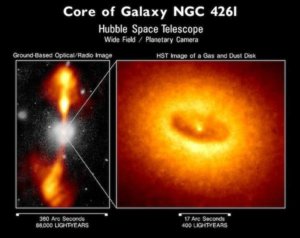
Insights into the theory
These findings also give us some insight into the mechanism of the Black Hole Principle itself. The paper that said that water is found in liquid form near the gas jets from the stars could give us some clue if water is being ejected by The Black Hole Principle fully formed as a molecule. It would suggest it could be.
The concept that stars emit water doesn’t fit the pattern of mainstream science though which is why I think that these findings are not discussed very much if at all.

by Dr Manjir Samanta-Laughton | Apr 1, 2020 | Punk Science, Science
Oil, coal and other hydrocarbons have been found all over space. But we think that these substances are fossil fuels. so how did they get there?
Why is there oil on Saturn’s moon, Titan?
Some years ago it was discovered that one of Saturn’s moons called Titan harboured masses of organic chemicals – effectively it’s a massive oil field.
It has more oil than we have on planet earth it even rains down hydrocarbons! In fact, hydrocarbons which are supposed to be the molecules of life, are found all over space. Scientists have even found oil on Mars.
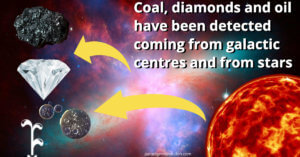
And the biggest oil field ever discovered exists in the far reaches of space. Not only that but coal has also been found coming out of stars.
It causing some people to find a way to mine the resources in space which is actually a rapidly growing industry. But why are oil and coal there in the first place?
Fossils in Space?
Oil and coal are supposed to be fossil fuels created from long-dead trees and marine life.
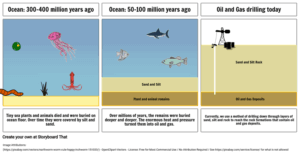
There are no trees or marine life on Titan or Mars on stars or outer space so what is going on?
Upwelling theory
A big clue came from Physicist, Thomas Gold who wrote in his book, The Deep Hot Biosphere that the pattern of distribution of oil and coal on Earth fits an upwelling origin – which means that oil and coal are coming up from the deep and not sinking down from the surface.
It really is an excellent book that exposes that many of our ideas about fossil fuels and how they are created just do not stack up to the evidence. Gold was not the first to propose this idea; Russian scientists did so too.
Oil from Black Holes
I am proposing that the reason we see hydrocarbons all over space is that they are being produced by the Black Hole Principle.
According to this theory, Mars, Titan and even the Earth are prolific in producing oil from their interior.
But for the theory to be correct, we need to spot hydrocarbons coming out of black holes.
And indeed we do see greasy molecules from galactic centres.
A radical new theory that fits the evidence
So you heard it first on Punk Science TV – Fossil fuels are not fossils but created by the interiors of black holes, stars, planets, moons and even comets – that’s why comets are covered in hydrocarbons.
If you want to know more about how the universe really works then follow me on Facebook or Youtube for more Punk Science TV
Further reading
Fossil fuels and black holes
Methane on Mars

by Dr Manjir Samanta-Laughton | Feb 19, 2020 | Punk Science, Science
Diamonds in space
We think of diamonds as rare gems created in the bowels of the Earth by the compression of coal, so why are there so many diamonds in space?
Diamonds are often found on Earth in vertical shafts called Kimberlite pipes. These are named after the diamond-rich town of Kimberley, South Africa.
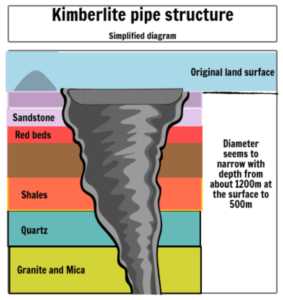
Diamonds and black holes
I noticed there was a similarity between these vertical shafts and the bipolar jets in black holes.
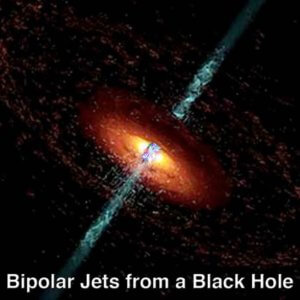
I thought to myself, if I am right and diamonds are created in these energetic jets by the Black Hole Principle then there should be diamonds all over space.

It’s raining diamonds!
Well, sure enough, it rains diamonds on many different planets including Saturn, Jupiter and Neptune. As you may remember water and rain formation is linked to the Black Hole Principle.
There is even a white dwarf star which has a diamond core and there are micro diamonds coming out of stars.
Conclusion
Obviously we need to do some more work on this but it looks like diamonds are created by the Black Hole Principle and the intense pressures and energies in the jets.
Hope you enjoyed this episode, follow and subscribe for more Punk Science TV.

by Dr Manjir Samanta-Laughton | Jan 22, 2020 | Punk Science, Science
Saturn’s moon, Enceladus is producing massive water plumes as well as organic molecules. But does this indicate life is on Saturn’s moon?
Shock Geysers
When massive water geysers were found on Saturn’s moon Enceladus – it was a bit of a shock. These activities were explored by the Cassini probe which also found complex organic chemicals.
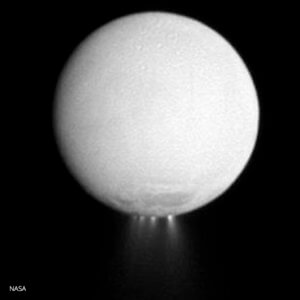
Credit: NASA
Scientists seem to think that all that is needed to create life are water, organic molecules and energy despite the fact that just one DNA molecule being created randomly has massive odds stacked against it.
But that’s another story.
Let’s just say the possibilities exist for life on other worlds.
But is it life?
Conditions ‘for life’ are now being found all over the solar system like on Enceladus. Does this mean that life exists there?
Not necessarily.
Enceladus is giving off plumes of water and complex organic molecules. The plumes of water are being powered by the Black Hole Principle – just as they power jets of water in galactic black holes.
Powered from the inside
It’s the same mechanism powering the water jets all the way down at each level, creating intermittent plumes and jets of water.
And I have discussed before, the same principle is responsible for the organic molecules in planetary ejections such as methane from Mars. In fact, we have been finding complex organic molecules coming out of the centres of galaxies just as we would expect if black holes are creating them.
So all this could be created in processes that is devoid of life as we know it. However,
This doesn’t mean necessarily that biological alien life is not on Saturn’s moon, Enceladus as it could also be there as well as displaying Black Hole Principle behaviour.
Do you think we need more evidence before declaring ‘life’ on other worlds?
Please leave a comment below.














